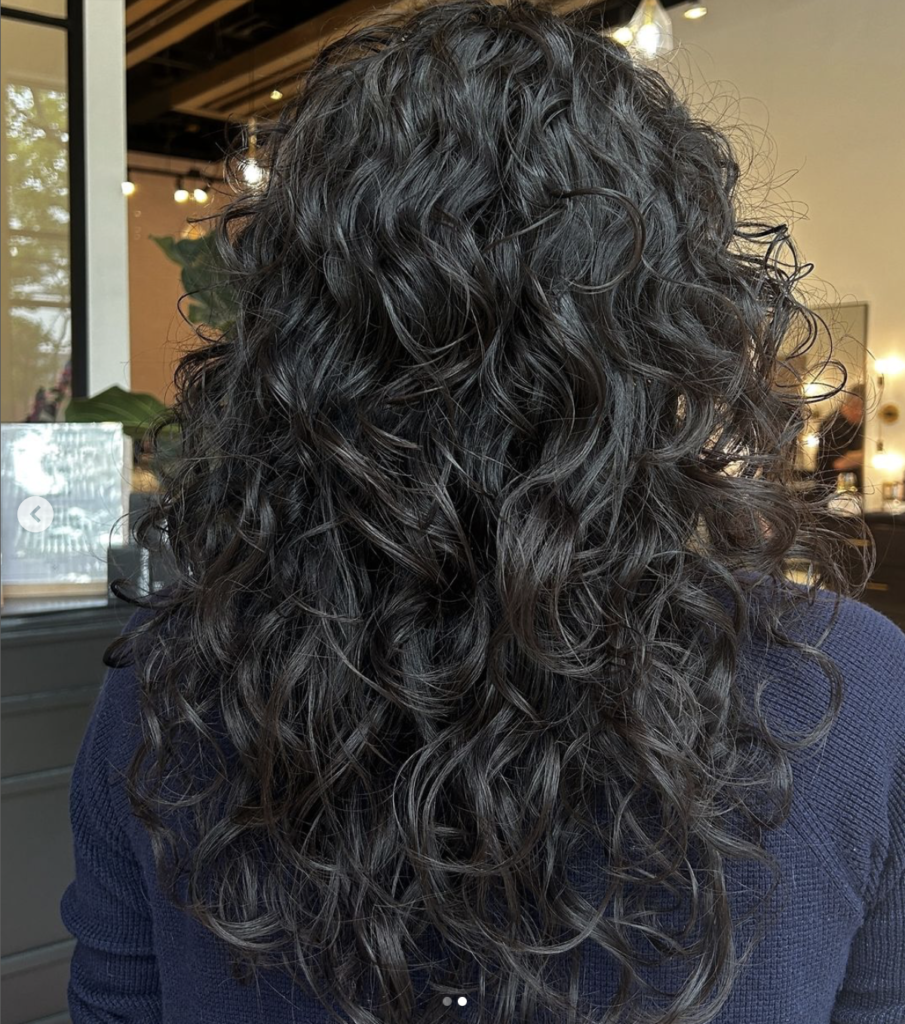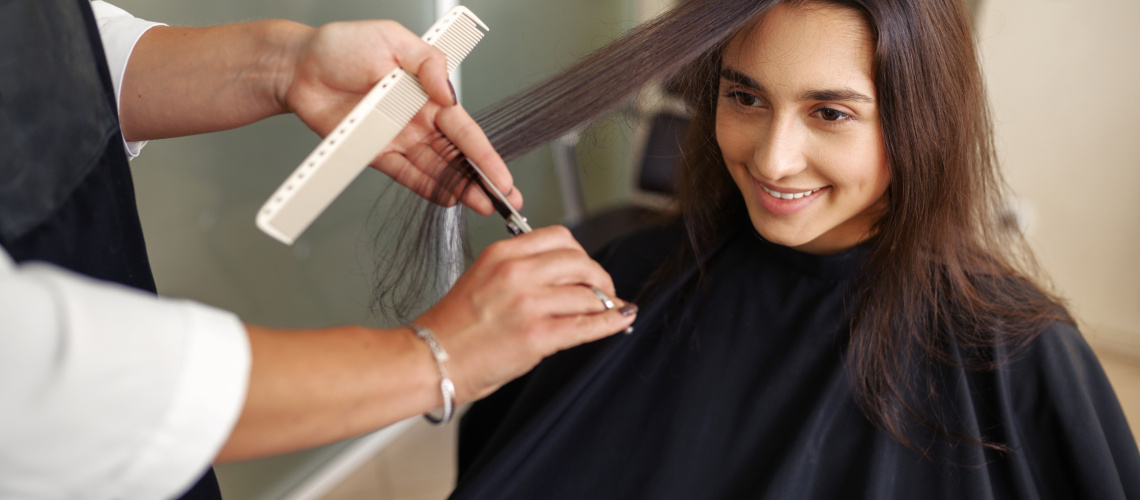Transitioning from relaxed to natural hair is an exciting journey, but it can also be challenging as you navigate the two different textures. Selecting the right haircut can make this process much easier, allowing you to blend the textures while maintaining a style that suits you. Whether you want to make a bold statement or take a gradual approach, the right haircut will support healthy growth and give you the confidence to embrace your natural curls, coils, or waves.
Best Haircuts for Managing Two Textures
1. The Big Chop
What It Is:
The Big Chop is the most dramatic and efficient way to transition from relaxed to natural hair. This method involves cutting off all your relaxed hair at once, leaving only your natural texture. It’s a bold move but highly effective in allowing your natural hair to grow without the burden of managing two different textures.
Why It’s Great for Transitioning:
The Big Chop eliminates the need to deal with the contrasting textures of relaxed and natural hair. By starting fresh, you can focus entirely on caring for your natural curls, coils, or kinks from the start. It also allows you to rid your hair of any chemically treated or damaged ends, making way for healthier, faster growth.
Style Tips:
- Consider getting a fade or tapered sides for a modern, edgy look.
- Style your short natural curls with a curl-defining cream or gel to create definition and shine.
- Accessorize with headbands, scarves, or bold earrings to play up your new look.
2. Pixie Cut
What It Is:
A pixie cut is a short, low-maintenance hairstyle that’s ideal for those who want to gradually cut off relaxed ends while still keeping some length. With a pixie cut, your natural texture will grow out, and you can trim away the relaxed hair over time.
Why It’s Great for Transitioning:
A pixie cut minimizes the appearance of two different textures while giving you a chic, easy-to-manage style. It also allows you to slowly trim away your relaxed hair while encouraging healthy natural hair growth. Plus, pixie cuts can be styled in various ways, including sleek or textured looks.
Style Tips:
- Use a lightweight styling mousse or curl cream to style your natural curls as they grow out.
- You can slick down your edges with gel for a sleek, polished look.
- Experiment with finger waves or textured styles to add volume and definition.

3. Shoulder-Length Layered Cut
What It Is:
A shoulder-length layered cut is a versatile option that allows you to maintain some length while blending the two textures. Layers create movement and help disguise the line of demarcation where the relaxed hair meets the natural hair.
Why It’s Great for Transitioning:
The layers help blend your natural curls with your relaxed hair, making the transition phase less noticeable. This cut is also ideal for those who want to avoid cutting off too much length while still managing both textures. A shoulder-length cut offers enough length to style your hair in multiple ways while keeping it manageable.
Style Tips:
- Use a curling iron or roller sets to create uniform curls throughout your hair, making the textures blend seamlessly.
- A twist-out or braid-out is a great way to blend the two textures while adding definition to your natural hair.
- Consider using a leave-in conditioner and curl cream to keep your natural hair hydrated and reduce frizz.
4. Bob Cut
What It Is:
A bob cut is a timeless and stylish option that can be worn at chin-length or just above the shoulders. It’s a versatile cut that works well for those transitioning, as it gives you enough length to style but still offers a clean, sharp look.
Why It’s Great for Transitioning:
A bob is particularly helpful for gradually trimming away relaxed ends while maintaining a chic, sophisticated style. You can choose a blunt bob for a sharp, bold look, or opt for a slightly layered bob to soften the contrast between your natural and relaxed hair.
Style Tips:
- For a sleek bob, use a flat iron on low heat for the relaxed ends, while air-drying or diffusing your natural curls to boost volume.
- A side part or deep part can add more dimension to your bob and help frame your face.
- Wrap your hair at night to maintain the style and prevent frizz.
5. Long Layers with Natural Texture
What It Is:
For those who prefer to keep their length during the transition, a long layered cut can help you manage both textures while still maintaining fullness and volume. The layers add movement and reduce the appearance of two drastically different textures.
Why It’s Great for Transitioning:
Long layers allow you to keep your length while gradually cutting off the relaxed ends over time. The layers also help to blend the natural texture with the relaxed hair, making the transition less noticeable and more manageable. This style gives you versatility, as you can wear it straight, wavy, or curly depending on your mood.
Style Tips:
- Use a heat protectant if you choose to style the relaxed ends with heat, but focus on air-drying or diffusing your natural hair to protect its texture.
- A braid-out or twist-out is ideal for blending the two textures and keeping the hair uniform.
- Deep conditioning treatments will help keep your natural hair moisturized and reduce breakage at the demarcation line.
6. Tapered Cut
What It Is:
A tapered cut is a short hairstyle that is longer on the top and shorter on the sides and back. This style is perfect for those who want to experiment with their natural texture while trimming away relaxed ends. It offers a stylish, edgy look and requires minimal maintenance.
Why It’s Great for Transitioning:
A tapered cut allows you to keep some length at the top, giving you the freedom to style your curls while slowly cutting off the relaxed hair. The shorter sides and back make it easier to manage, and the defined shape helps maintain a polished, professional look during the transition.
Style Tips:
- Use a curl-enhancing product to define your natural curls on the top section.
- Slick down the shorter sides for a sleek, polished look, or add a design for extra flair.
- Regular trims will keep the tapered look sharp and prevent breakage at the demarcation line.
Additional Tips for Transitioning from Relaxed to Natural Hair
- Protective Styles: While you’re transitioning, consider protective styles like braids, twists, or weaves to reduce the need for heat styling and manipulation. These styles can protect your natural hair while allowing it to grow out without added stress.
- Regular Trims: To promote healthy growth and prevent breakage, get regular trims to slowly remove the relaxed ends. This will help you maintain a fresh, healthy look throughout the transition process.
- Hydration and Moisture: Keeping your natural hair hydrated is crucial during the transition phase. Incorporate deep conditioning treatments, leave-in conditioners, and oils into your routine to prevent dryness and breakage, especially at the line of demarcation.
- Patience: Transitioning to natural hair takes time, so be patient with the process. Embrace your natural texture as it grows out, and remember that the journey is about the health of your hair.
Embrace Your Natural Hair Journey with Confidence
Transitioning from relaxed to natural hair can be a rewarding journey, and choosing the right haircut plays a key role in making the process smoother. Whether you go for the Big Chop or choose to transition gradually with a layered cut or pixie, finding a style that works for you can help boost your confidence and make managing the two textures easier. Consult with a professional stylist who can recommend the best cut for your hair type and texture, and remember to prioritize the health of your hair as it grows out naturally.
Ready to start your transition? Book a consultation with our salon today, and let us help you choose the perfect haircut to make your natural hair journey a success.

